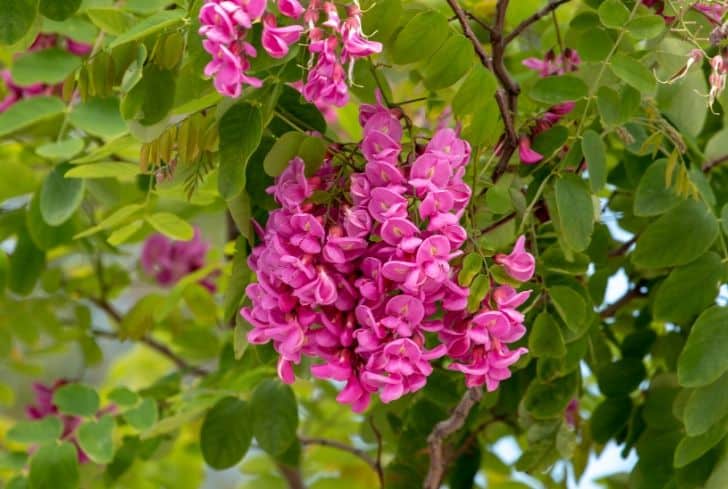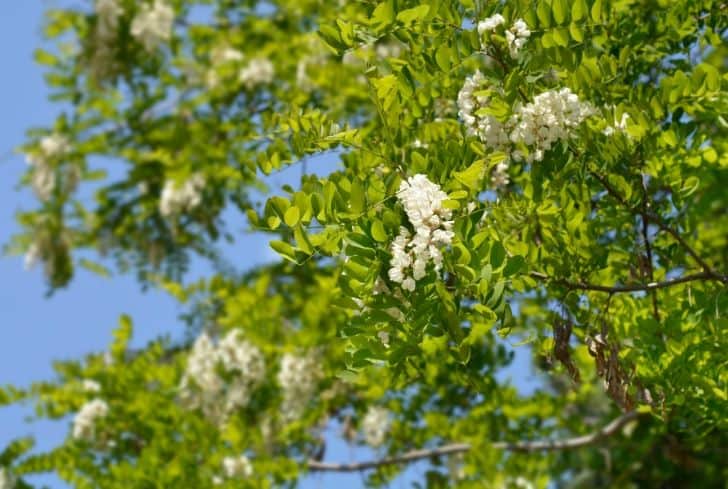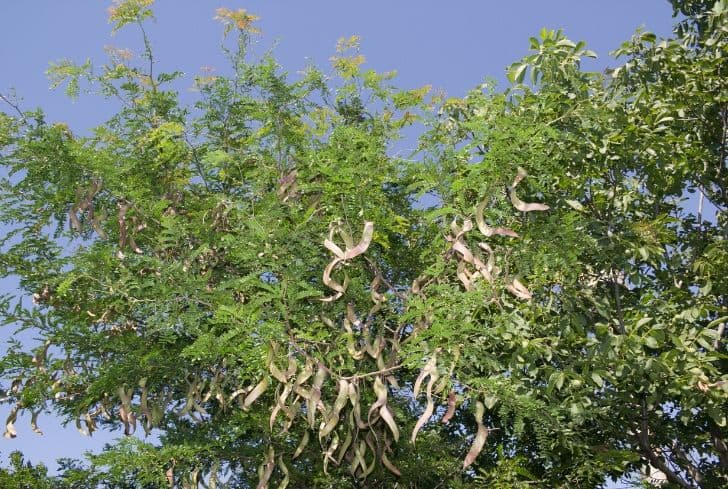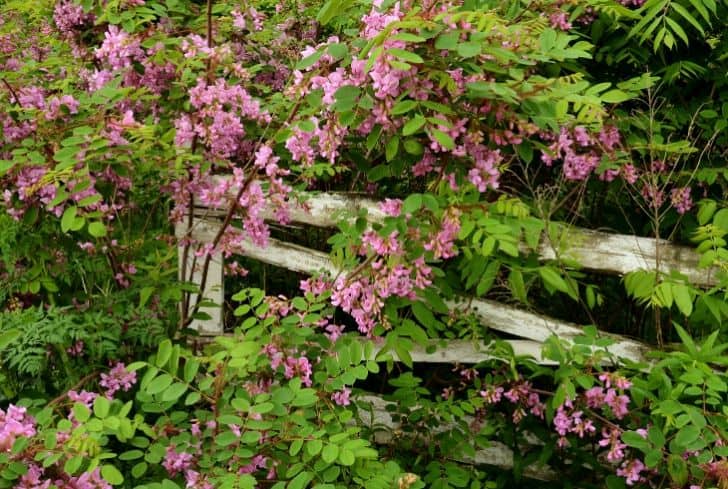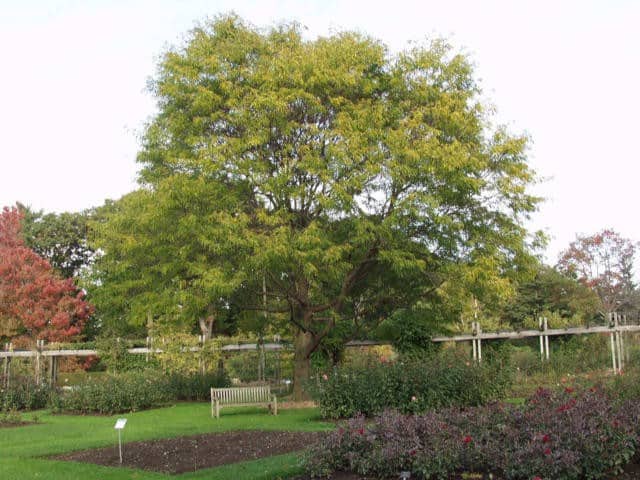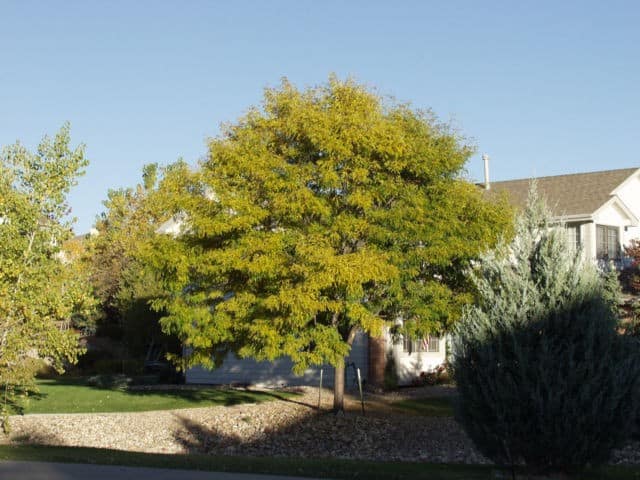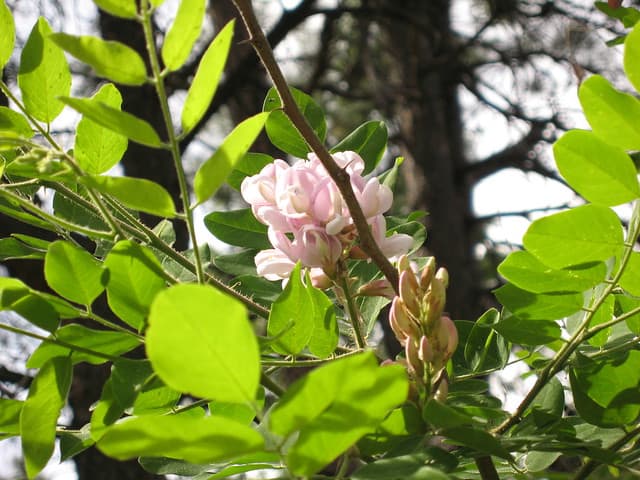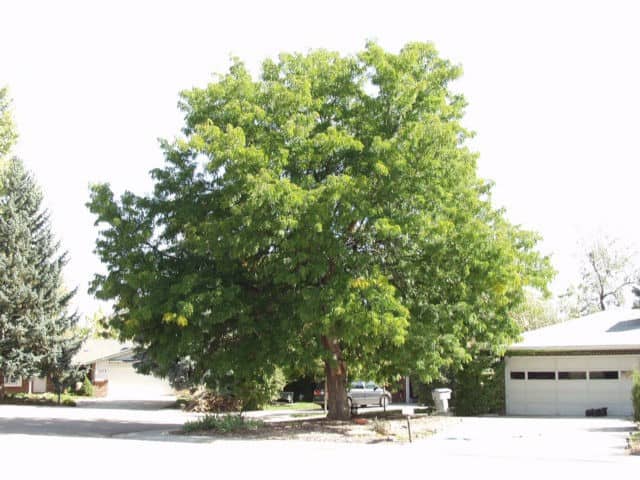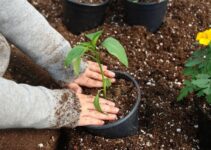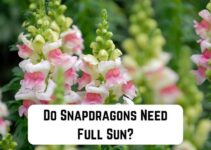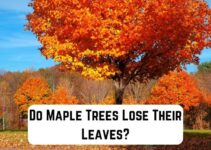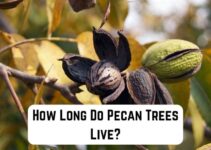Locust trees are fast-growing flowering plants belonging to the family known as Fabaceae. Almost all locust trees can survive for more than a hundred years, and their wood is deemed harder than the strongest deciduous trees.
Commonly found variants of locust trees include the Black and Honey Locusts. These trees are popular for their incredibly solid wood, mildly fragrant flowers, and vibrant foliage.
However, these aren’t the only locust trees.
In this article, we will discuss the top locust tree variants widely found in different parts of the globe.
1. Black Locusts
This is probably one of the most popular and common variants of locust trees. In addition to having multiple uses, it is also extremely convenient to cultivate.
Unlike several other variants of locusts, Black Locusts grow rapidly in almost every kind of soil condition. They can withstand drought, although it grows widely across riverbanks and woodlands.
Native to the North American region, these trees can reach a height of a whopping 80 feet. In most cases, however, they only grow between 40 and 60 feet, with canopies spreading across 30 feet.
The branches of these plants do not have a uniform pattern, and, in most instances, they leave gaps. This further makes way for excellent shade.
While Black Locusts are widely planted for their decorative use, they are also equally popular for their strong, hard, and solid wood. At one point, the wood from these trees was used for crafting nails installed in ships.
Although the wood is extremely difficult to cut through, it is one of the best choices for firewood as it can easily burn over a long period.
In several regions, it is also cultivated as a honey plant, where it may bloom and thrive well. The flowers are an ideal source of nectar for honeybees in those specific regions.
To cultivate this plant, you will require a massive space that receives direct sunlight. It grows easily, but it can be invasive. Hence, check the suckers occasionally so the species doesn’t dominate your free space.
In addition to space, you should also consider the drainage option while growing the plant. The Black Locust plant requires maximum drainage as it doesn’t thrive well in soggy soil. It can, however, adapt to the growing conditions of fairly moist soil unless it is waterlogged.
The Black Locust can also withstand poor-quality soil and will even thrive under high levels of soil and high air pollution. It is known to improve the quality of the soil where it is growing, extracting nitrogen from the atmosphere and sending it back to the soil. Overall, the tree is quite hardy and easy to grow.
2. Honey Locust
Widely known for its massive size, Honey Locust trees are another fast grower. They can reach 100 feet in the wild and about 40 to 70 feet during cultivation. The trees also have a massive spread that offers excellent shade in parks.
In addition, Honey Locust trees also feature tiny little leaves that need not be collected during the fall, and that’s because they are extremely small and won’t cause any blockage in your sewer or drainage unit.
Given this unique trait and the trees’ excellent shade, it’s easy to see why they are popularly grown in municipal areas.
Also, unlike many other popular variants of locust trees, this American species grows in almost all soil conditions but does best in moist soil with high levels of salt and a balanced pH.
As with the Black Locust, cultivating these trees is quite simple. All you need to do is plant them in a large area with ample sunlight.
One of the unique attributes of the Honey Locust Tree is its leaves. Unlike other locust plants, the leaves of the Honey Locust Tree are bright green with a yellowish tinge during the fall season. Once the leaves wither in the fall, the tree almost instantly produces new leaves, mostly visible during spring.
The other feature of the Honey Locust Tree is that it has thorns at the leaves’ base and on the branches. Initially green, these thorns take on a dark brownish hue and turn brittle with age. They are also extremely sharp and can measure up to four inches in length.
The flowers of these trees are pale and petite. In the male plants, the flowers tend to form dense, elongated dropping clusters. However, in female plants, the flowers tend to be arranged more loosely. Both the male and female plants have an intense scent.
3. Skyline Honey Locust
The Skyline Honey Locust tree originates from the North American region, and it is basically a form of a deciduous tree with a unique and pyramid-like shape.
The tree grows to an average height of 45 feet and is known to spread up to 25 feet. It is widely popular among shade trees and is best known for its delicate yet ferny structure.
The fern-like structure casts a dappled shade right under the tree, making it fairly upright regarding growth. This very attribute also makes it an excellent street tree.
Skyline Honey Locust trees grow tall and wide and tolerate almost any weather condition. They have excellent landscape compositions, and their texture makes them ideal for an accent in homes or offices.
The trees are fairly low maintenance, and you should ideally prune them in the winter after the cold has passed. They thrive in sunlight and can grow perfectly in both dry and moist soil conditions.
One of the defining features of this species is that it isn’t finicky about the pH level and is tolerant of all kinds of salt.
The branches and trunks come with massive thorns up to three inches long. In late spring, they grow greenish-white and yellow flowers accompanied by dark, long seedpods. The Seedpods come with seeds and another unique sweet and chewy substance.
4. Bristly Locust
Alternatively known as the Moss Locust and the Rose Acacia, the Bristly Locust is a deciduous and beautiful shrub.
Traditionally, this species was found in the South Eastern parts of the United States, but that has changed, and they are now grown in multiple other regions and certain parts of North America.
When the Bristly Locust first originated, the natives started calling it the Cherokee. At that point, it was planted primarily for medicinal uses, particularly for treating toothaches. However, some locals grew it for the purpose of brewing a tonic from it to feed cows.
Bristly Locust trees have an average height of eight feet and are known to be aggressive. Their shrubs are distributed across via suckers and are invasive in several parts of Ohio, Michigan, and Washington.
A defining feature of the Bristly Locust Tree is its beautiful green leaves that thrive on bristly stems. Along with the pinkish flowers, these leaves exude a beautiful fragrance that often attracts butterflies, bees, and a range of other insects.
Insects primarily thrive in these trees during the late summer and spring months, and in some instances, you might even observe the reddish-brown seedpods along with the flowers.
Bristly locusts thrive best in moist soils and loamy land laden with silt. And unlike the common variants of Locust Trees, this species doesn’t have a high tolerance and can only be properly grown with moderate drainage.
The Locust tree species is popular for its excellent erosion control, thanks to its inherent ability to provide thick and quick vegetation to almost all vital areas that require some degree of stability. So, if you live on a site affected by erosion, you might consider growing the tree there. Such is the case because these trees have an
5. Skycole Locust
The Skycole Locust Tree features strong wood and dense foliage. It grows exceptionally fast and is found in several parts of the United States.
Although the plant can comfortably thrive in almost all locations, it grows incredibly well in adequate sunlight and woodlands. In some instances, it might also thrive well across streams.
The hardiness of this tree ranges from four to eight, and it can grow up to a height of between 40 and 50 feet, spreading up to about 25 feet wide.
As with many other variants of locusts, the Skycole Locust is both deciduous and hardy. It may be best defined as a fast-growing legume with multiple qualities that enable it to sustain itself in poor soil conditions, droughts, high salt levels, and pollution.
This tree features tiny green leaves with a mild tinge of blue. The leaves can grow up to 25 centimeters and are usually compound.
The plant also produces striking white flowers with a dash of pink and purple. These flowers may be found hanging in a cluster measuring four to twelve inches long.
6. Imperial Honey Locust
Belonging to the family of Honey Locusts, the Imperial Honey Locust is one of the most widely popular and fine variants of shade trees. It has multiple ferns and a perfectly delicate structure with a yellowish or greenish tinge.
The species serves as a lawn tree but can double up as a popular street tree. It has an average height of between 30 and 40 feet and a spread of between 25 and 35 feet. Plus, it blooms during late summer and spring, between May and June.
The plant withstands multiple environments and soil conditions, although it grows best in the full sun and moist soil. It is primarily used for decorative purposes, though sometimes it may be used in crafting furniture.
7. New Mexico Locust
Despite being called the New Mexico Locust, this tree doesn’t originate in the Mexican regions. Instead, you will primarily find them in the Southwestern parts of the United States.
The New Mexico locust may either develop into a tree or a dense shrub, depending on the soil and sunlight. Ideally, it grows up to 10 feet tall with stunning, large branches and dense batches of flowers.
8. Purple Robe Black Locust
Belonging to the family of Black Locusts, this is one of the prettiest locust trees. Its leaves tend to change according to the different growth stages.
For instance, in the blooming stage, you will find bright green leaves with a tinge of purple. Again, when it is completely formed, you will find bronze-colored leaves.
The flowers of the trees are beautiful and offer an excellent contrast to the pinkish and purplish shades.
9. Shademaster Honey Locust
Shademaster Honey Locust is one of those variants of the Honey Locust that doesn’t boast thorns and is known to grow exceptionally fast. They grow up to an average height of 50 feet and do not bear fruit.
This makes the species easier to maintain and grow than other Locust plant variants. The tree features green leaves that turn yellow during fall, while the flowers have a yellowish tinge.
10. African Locust Bean
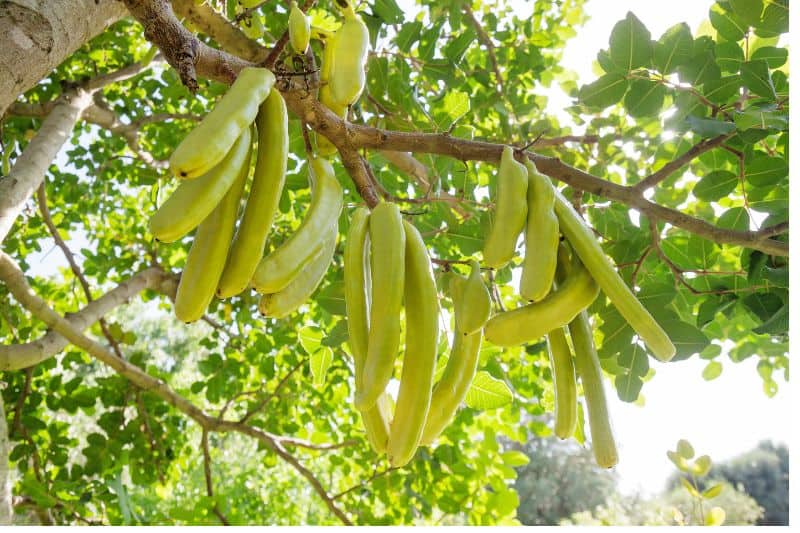
The African Locust Bean tree is one of the most beautiful locust trees still alive today. It grows tall and creates Chinese shadows with attractive lace patterns as the sun hits its foliage.
African Locust Bean Trees don’t produce flowers. Instead, they have round and furry red balls, which is probably why they are called Locust Beans. These structures are aesthetically pleasing and hang from the big Locust tree.
Other than the red balls, African Locust Bean Trees also have pods. It’s the same pods usually seen on other locust trees: long, brown husks with an edible yellow pulp inside them.
When this plant is placed on your lawn, hacienda, or garden, it does not usually provide a fully shaded area as its leaves are quite thin. But its beauty and other benefits make it a great centerpiece on your lawn.
To plant an African Locust Bean Tree, you need to have acidic soil with a pH of between 4.5 and 5.5 or neutral soil with a pH above 6. This plant prefers sandy soil, grows quite slowly, and can reach heights up to 60 feet tall and spread 35 feet wide.
11. Water Locust
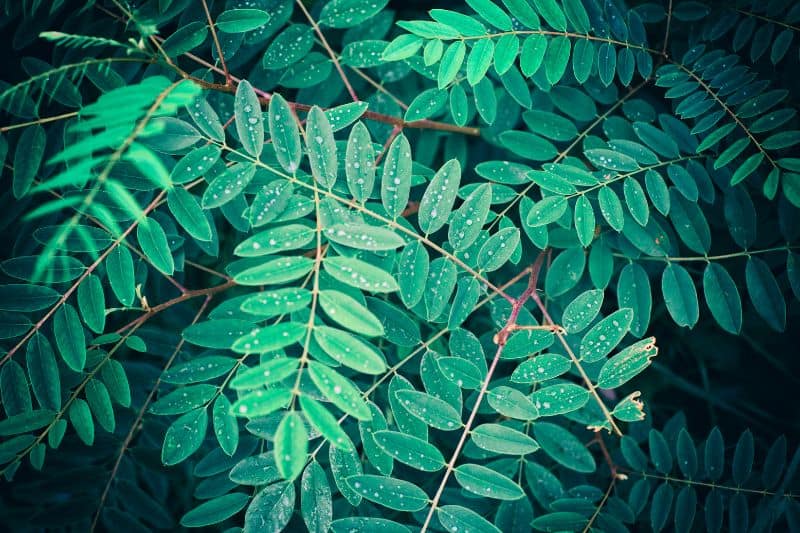
Water Locust trees are usually found along low-lying waterlogged lands and riverbanks, which is where they get their name. This locust tree grows up to 40 meters high, which really isn’t so tall. But it provides a lot of shade and serves as an easy and great backdrop.
They grow wildly and have long reddish-brown thorns on which their bodies are smooth except for their tips. Aside from that, water locusts have small, thin green leaves and almond-shaped reddish-brown pods that also have pointy tips.
This species produces beautiful and fragrant flowers, providing a striking contrast to the tree’s overall appearance. Apart from its aesthetic appeal, this tree serves as excellent protection for gardens or miniature forests by deterring animals with its thorns, preventing them from consuming its leaves.
Plant a water locust tree in acidic, neutral, or alkaline soil and keep it wet or boggy. As for the soil type, you can work with clay, loam, and sand, but not chalk soil.
12. Sunburst Honey Locust
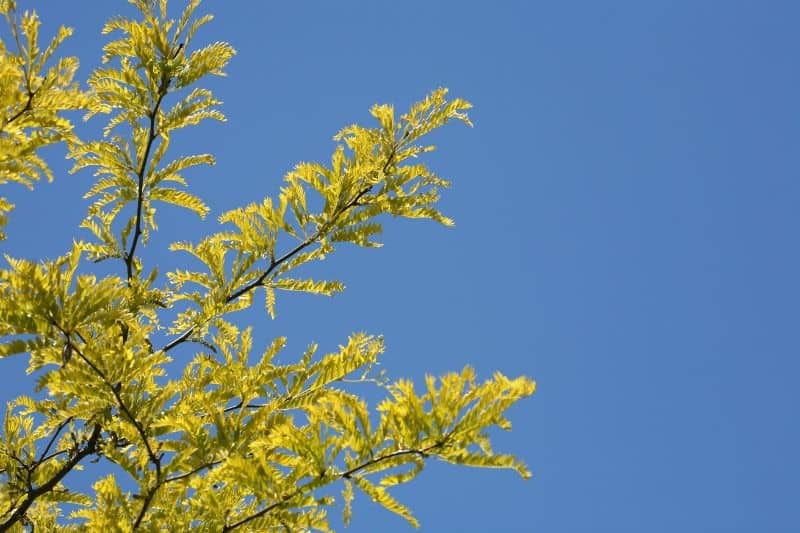
This type of locust tree belongs to the family of Honey Locusts. Sunburst Honey Locust trees are thornless and grow shorter than the usual honey locust variants.
Precisely, these trees can grow to about 40 feet tall, and as they are hit by rays of the sun, their thin and feathery foliage creates a dappled shadow that gives a great ambiance.
Aside from those, this variety of Honey Locust doesn’t grow pods, creating less mess. In the late spring and early summer, the Sunburst Honey Locust tree grows greenish-yellow flowers that bloom in clusters, and its leaves have bright light green hues.
During spring, the leaves of this tree turn pale yellow, which is quite aesthetic, and in fall, its foliage turns into a beautiful yellow color, similar to other locust trees.
And that’s it!
Those are some of the different variants of Locust Trees. Most of them can survive for 100+ years, and their lumber is deemed extremely valuable. As with common deciduous trees, the lumber from locust trees too is often used for making furniture.
References:
